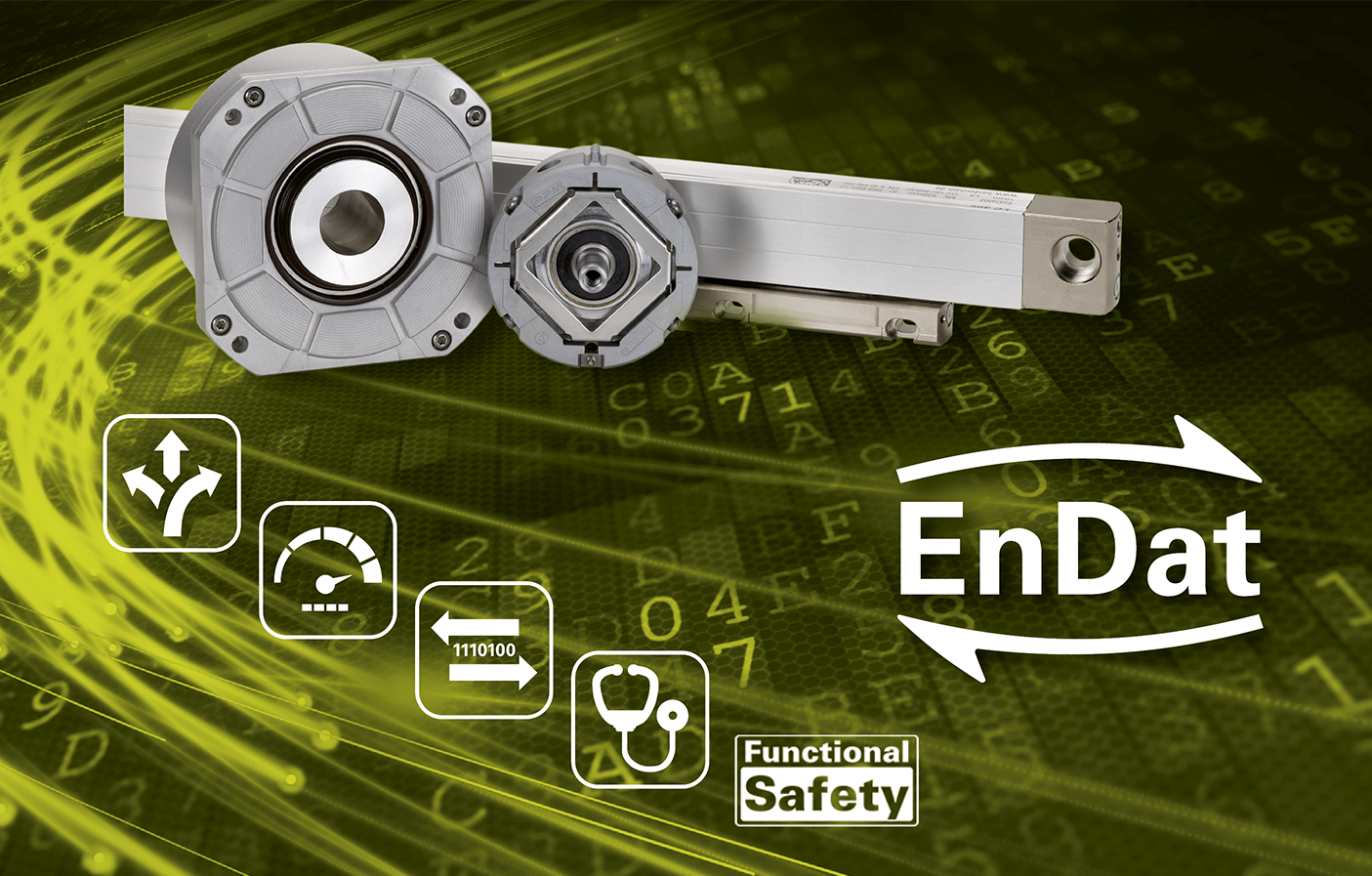Explanation of the overview files
ID
ID number of the encoder
Functional safety
Does the encoder support functional safety? For more information, see the Specifications.
Calculation time
Processing time of encoder (“calculation time”) Time tCAL is the smallest time duration after which the position value can be read by the encoder. For more information, see the Specifications or the EnDat Application Note.
Bit width of position 1
The data word width of the transferred position value depends on the encoder. The transmission protocol must be flexibly adapted to this value. Usually the value is read from the encoder memory and the master is parameterized with this value.
Encoder type
In some cases, parameters must be interpreted differently for the various encoder types (see EnDat Specifications or Application Note) or EnDat additional data must be processed (e.g., incremental or battery-buffered encoders). The parameters required for operating the encoder and the supported functions are stored in the memory of the encoder. Further information on incremental or battery-buffered encoders can be taken from the EnDat Application Note.
A distinction is made between the following encoder types:
| Encoder type: see EnDat 2.1 parameters, word 14 (bits 12 to 15) | Code | |||
|---|---|---|---|---|
| Linear encoder | Absolute | 40 | ||
| Absolute | With cyclic coding | 60 | ||
| Incremental | With distance-coded reference marks | 10 | ||
| Incremental | Without distance-coded reference marks | 0 | ||
| Incremental | With distance-coded reference marks | With battery buffer | 30 | |
| Incremental | Without distance-coded reference marks | With battery buffer | 20 | |
| Rotary or angle encoder | Absolute | Singleturn | C0 | |
| Absolute | Multiturn | With gears | E0 | |
| Absolute | Multiturn | With battery buffer | D0 | |
| Incremental | Singleturn, with distance-coded reference marks | 90 | ||
| Incremental | Singleturn, without distance-coded reference marks | 80 | ||
| Incremental | Singleturn, with distance-coded reference marks | With battery buffer | B0 | |
| Incremental | Singleturn, without distance-coded reference marks | With battery buffer | A0 | |
| Touch probes | 50 | |||
Error messages
An error message is set if there is a malfunction in the encoder that could be causing incorrect position values. Up to 16 error messages can be distinguished, of which seven are presently occupied. Individual error messages are supported depending on the encoder.
Warning messages
Warnings show that the tolerance specifications for certain internal encoder parameters were exceeded. Over extended periods, this can trigger error messages. Warnings therefore enable the user to correct problems before they can cause errors. Individual error messages are supported depending on the encoder.
Diagnostics
Encoders with EnDat 2.2 can cyclically output so-called valuation numbers (BWZ) in order to evaluate the functions of the encoder. The valuation numbers provide the current state of the encoder and indicate the encoder’s “function reserve.” Their scaling is identical for all HEIDENHAIN encoders. This makes integrated evaluation possible.
- BWZ 1: Valuation of the incremental or scanning track
- BWZ 2: Free for future applications
- BWZ 3: Valuation of the absolute track / (reference pulse width)
- BWZ 4: Valuation of the position value formation / (reference pulse position)
- System-specific interface: In addition to the online diagnostics, certain encoders provide special information over the diagnostics interface for mounting; for example, the mounting dimensions. For more information, see the EnDat Application Note or the Specifications.
Additional data
An encoder with EnDat 2.2 interface can transmit the position value together with up to two additional data. For more information on the contents of the transferred values, see “Technical Information EnDat 2.2.”
This overview does not take additional data into account that are always available (diagnostics, memory parameters, MRS code acknowledgment) or are reserved for future applications (additional sensors, commutation, acceleration, asynchronous position value, timestamp).
- Position value 2: For incremental encoders: Relative position information (counter starts from zero at switch-on). The absolute position value is available only after the reference marks have been scanned. For absolute encoders: Second absolute position value for safety-related applications.
- Temperature: Transmission of temperature in encoders with integrated evaluation of internal or external temperature sensors.
- Limit position signals: Limit position signals and homing information.
- Operating status error sources: Detailed information about the cause of the present error message (is needed, for example, for encoders with a battery-buffered revolution counter).
OEM
In this freely definable memory area, the OEM can store his information, e.g., the “electronic ID label” of the motor in which the encoder is integrated, indicating the motor model, maximum current rating, etc. The size is given in EnDat words (16-bis words).
Additional functions
The EnDat interface makes it possible to set various functions regarding data transmission or the general operation of the encoder. The settings are normally saved and need only be made once. Functions that are reserved for future applications are not listed in the table.
- Datum shift: This function is called “electronic datum setting” and enables the customer to fit the encoder datum to the datum of the application. The datum shift can be write-protected.
- The recovery time is adjustable: The recovery time is reduced when very short cycle times are to be attained.
- Multiturn functions: Makes it possible to connect encoders with a battery-buffered revolution counter.
- RM bit can be reset: Only for incremental encoders or the EIB. The existing referencing is deleted, and the referencing process, i.e., scanning the reference mark(s), is restarted.
